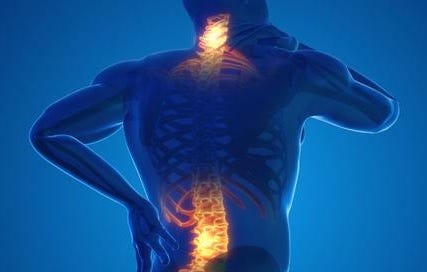UPDATED: April 24, 2025
Welcome to the Healthy Living Is Good Medicine Newsletter, a totally free, health education publication covering a wide variety of topics, with original articles intended to help people lead healthier and more fulfilling lives.
As you may know, this Newsletter has no paid subscriptions and does not accept donations. It is provided as a public service. From time to time, I may advertise books I have written, and this is one of those times.
My latest book, Inside Guide to Alpine Skiing, is about staying safe, having fun, and making rapid progress as a recreational skier. I combine my experience as a nationally certified ski instructor with a physician's approach to preventing injuries and illnesses while skiing at high mountain resorts. Putting the two professions together gives me a rather unique perspective.
If you snow ski, or are thinking about taking up the sport, or know someone who skis or would like to give it a try, you will want to order my book or send a gift link. It is now available in digital (eBook) format from Barnes & Noble, Google Play Books, and the Kindle Store. I invite you to read an excerpt.
Thinking about skiing and the inevitable falls provides a segue into today’s topic; the universal human experience of physical discomfort and pain. How we deal with pain, from sore to excruciating, deserves serious attention.
About Pain
We are born with an innate imperative to avoid painful stimuli and seek pleasurable ones. Yet, despite our best efforts, pain is an inescapable part of our life experience. Its intensity and duration, and our response to it, can have far-reaching consequences for our own lives and the lives of those around us. When dealing with pain, it’s important that we first do no harm.
At its most basic level, acute physical pain serves as an essential biological warning system. It signals that something is wrong with our body, prompts us to take rapid action to protect ourselves, and to seek healing when tissue damage has occurred. This kind of pain is a survival mechanism, and from it we can learn to avoid harmful situations in the future.
Acute pain arises suddenly, and is typically a direct response to a specific injury or illness. Its primary purpose is to warn us of an immediate danger. It is typically well-localized, and its intensity is usually proportional to the severity of the tissue damage. Acute pain does not persist once the injured tissue has healed.
As an example, sports injuries are often initially treated with ice, compression and elevation of the injured area, immobilization, and the short-term use of pain and anti-inflammatory medications. Physical therapy may later be required to restore strength and mobility to the injured area.
Chronic Pain
This is pain that persists way beyond the point where the initial injury or illness has healed. Chronic pain can be constant or intermittent and vary in intensity. It can create a plethora of issues that may significantly reduce the quality of one’s life. Such pain is considered a treatable condition in itself, and often requires a multidisciplinary approach that includes lifestyle changes, physical and occupational therapy, and psychological and social support.
The long-term use of opioids for the treatment of chronic pain is medically contraindicated. Inappropriately prescribing them resulted in a public health emergency known as the opioid epidemic. It has caused millions of people to become addicted, resulting in many overdoses and deaths due to street drugs that include the highly potent narcotic, fentanyl.
The balance between alleviating pain and avoiding drug dependency has become one of the most challenging dilemmas faced by modern medicine. One approach has been to enhance the body's endogenous pain-relieving mechanisms. Endorphins are naturally occurring peptides produced primarily in the pituitary gland and hypothalamus. They function as neurotransmitters that bind to opioid receptors in the brain, which reduce a person's perception of pain.
Because exogenous opioids suppress endorphin production, one strategy for treating chronic pain for patients who have been taking opioids is to progressively reduce their dosage. However, this approach may seem counter-intuitive, and even after explaining the physiological mechanisms involved, patients tend to resist cutting back on pain meds.
Because such patients often have a psychological as well as a physical dependence upon their medications, weaning them off opioids may have to be accomplished by employing the placebo effect in a controlled environment. Before the days of hospital utilization review committees, case management, and all-too-frequent insurance company denials, I was able to hospitalize patients to withdraw them from opioids, and I can attest to this method's success.
Chronic Pain Rewires the Brain
Living with constant pain changes how your brain processes both your emotions and pain signaling. As pain erodes your overall mood, a vicious cycle develops; chronic pain becomes depressing, and depression amplifies the pain. A 2025 systematic review and meta-analysis found that 37 percent of adults with chronic pain also had a major depressive disorder.
The most comprehensive systematic review and meta-analysis of 301 placebo-controlled, randomized clinical trials of 56 treatments for chronic, non-specific, lower back pain found that the majority of non-surgical and non-pharmaceutical treatments were not effective. Only one in ten provided a small analgesic effect compared to a placebo, with core-strengthening exercises being the most efficacious. The same study found that acute lower back pain responded to treatment with NSAIDs (non-steroidal anti-inflammatory drugs), but not with acetaminophen, when compared to a placebo. Let us not, however, underestimate the power of a placebo.
Pain Tolerance
People vary widely in their individual pain thresholds. Successfully treating chronic pain involves addressing the psychological ramifications, as well as the patient’s pain. There are a number of factors involved in pain tolerance, some of which are genetic, while cultural conditioning and one’s personal experiences with pain also play significant roles.
Pain tolerance can be increased by anything that stimulates the release of endorphins. This includes brief painful stimuli such as trigger-point massage, physical activities such as intense exercise, aerobic dancing, laughter, yoga, and tai chi, and mental practices such as mindfulness, meditation, and guided imagery. Endorphins not only alleviate physical discomfort, they also contribute to reduced anxiety and can elevate a depressed mood.
As the story goes, T.E. Lawrence (aka “Lawrence of Arabia”), after lighting William Potter’s cigarette, allowed the match to burn down to his fingertips without evidencing any pain. When asked, “Doesn't that hurt?” Lawrence replied, “Certainly it hurts!” When Potter asked, “Well, what’s the trick then?” Lawrence replied, “The trick, William Potter, is not minding that it hurts.”
Cognitive-behavioral therapy has been successfully employed to help people change their attitude toward chronic pain. In some sense, people can learn to live with a low level of constant discomfort as a natural part of being alive. Our negative perceptions of pain and physical discomfort has been culturally conditioned. A mindset about daily discomfort being something not to be tolerated has led many people to misuse alcohol, cannabis, ketamine, opioids, ultra-processed comfort foods, and both prescription and over-the-counter (OTC) medications for pain relief.
As a physician, I must always weigh the potential harms of any treatment against its potential benefits. Minimizing the risk of harm needs to figure prominently in the decision-making processes of both doctors and their patients. “First, do no harm” is the foundational principle of medical ethics:
Acetaminophen and Paracetamol
N-acetyl-para-aminophenol (APAP) is a commonly used, non-prescription, non-opioid, non-steroidal, mild analgesic (pain reliever) and antipyretic (fever reducer), sold as generic acetaminophen (brand name Tylenol) in the U.S. In other parts of the world, the drug is called paracetamol (brand name Panadol). It is on the World Health Organization's Model List of Essential Medicines.
The drug has been cited by the National Institutes of Health (NIH) as the leading cause of liver damage that's severe enough to require transplantation. In America, where high doses are sold without a prescription, acetaminophen is responsible for about 250 unintentional deaths each year, and tens of thousands of people become ill from taking too much. Due to the risk of hepatotoxicity, many countries limit the number of doses that can be sold OTC, and some may require a prescription.
Short-term adverse effects of acetaminophen are uncommon at recommended dosages, and are similar in frequency to NSAIDs such as aspirin, ibuprofen, and naproxen. Be aware that NSAIDs can potentially delay healing of bone and tendon injuries by inhibiting inflammation, which is a crucial part of the healing process. NSAIDs are also well-known to increase intestinal permeability and cause a “leaky gut” syndrome if taken more than a couple of times a month.
There are topical NSAIDs such as diclofenac topical gel that can be applied to an injured area for a few days to help reduce swelling and alleviate pain. Some people swear by CBD topicals for long-term relief of localized pain. While animal studies suggest that they could be effective, there are no randomized controlled trials demonstrating that topical CBD preparations are superior to a placebo.
Although acetaminophen is generally considered safer than oral NSAIDs as a long-term pain medication, for acute pain it has a narrower window of safety. A 2024 study of full-sibling, matched pairs, and their mother’s acetaminophen use during pregnancy, found no association with neurodevelopmental disorders. This suggests maternal acetaminophen use is unlikely to contribute to autism, ADHD, and intellectual disability.
When acetaminophen and an NSAID such as ibuprofen are used in combination, the analgesic effects are increased. Using the two medications together, with both of them at lower doses, may in some situations be preferable to increasing the dose of either medication used by itself. Consider using a combination for short-term relief of headache, backache, toothache, menstrual cramps, muscle aches, and arthritis pain.
Anything that impairs liver function can cause problems for people taking acetaminophen. Damage can result from fat deposits and scarring due to alcohol's hepatotoxicity, as well as the metabolic derangements associated with obesity. There are also infectious and genetic causes of liver disease.
Gilbert's syndrome, caused by a genetic mutation, is a common liver condition characterized by elevated levels of bilirubin in the blood, which can cause jaundice, a yellowish discoloration of the skin and eyes. The use of acetaminophen should be avoided whenever the liver's ability to metabolize bilirubin is compromised.
APAP Overdose
For an average, healthy, young adult, the daily dosage should not exceed 4,000 mg. However, liver toxicity has been associated with much lower daily doses when acetaminophen is taken by older people. For daily use, it is recommended that seniors and those with chronic illnesses limit intake to 3,000 mg per day.
Most people have few or non-specific symptoms of APAP toxicity during the first 24 hours following an overdose, which can include fatigue, abdominal pain, and nausea. This is typically followed by a quiescent period for a few of days, followed by liver failure, heralded by jaundice, blood clotting problems, and impaired cognition.
Additional complications of an acetaminophen overdose can include kidney and pancreas damage, with resulting renal failure, lactic acidosis, and severe hypoglycemia. Without treatment, death typically occurs in four days to two weeks, but people can recover fully with appropriate care.
N-acetylcysteine (NAC) is the mainstay of therapy for acetaminophen toxicity. NAC has FDA approval for treating potentially hepatotoxic doses of acetaminophen and is almost 100 percent effective if given within eight hours post-ingestion. NAC is also prescribed off-label for the treatment of acute liver failure. Treatment must be started promptly, even if symptoms are initially absent.
Acetaminophen produces toxic metabolites that can deplete the body’s glutathione reserves. These metabolites can then accumulate and cause tissue injury. NAC replenishes glutathione reserves by providing cysteine, an essential precursor in glutathione production. NAC also binds to the toxic metabolites, scavenges free radicals, and increase blood flow and oxygen delivery to the liver and other vital organs.
The French National Agency for the Safety of Medicines and Health Products has alerted healthcare professionals and parents about a concerning trend known as the “Paracetamol Challenge” that has been gaining popularity with children and adolescents on social media. The challenge involves deliberately taking toxic doses of paracetamol to see what happens and compete with friends over the length of their hospitalization.
Acetaminophen capsules and tablets usually contain 325, 500, or 650 milligrams of the drug. It is best to use the lowest strength that provides adequate relief, since taking more than necessary increases its toxic effects upon the liver. With “extra-strength” pills it is easier to exceed the maximum dosage. If you take OTC medications for allergies or colds, check their ingredients to see if they contain acetaminophen. More than 600 products contain the drug. If you take more than one of them, you had best do the math.
Drug interactions are also a concern. Anti-seizure meds, blood thinners, and some supplements can adversely interact with acetaminophen. Check with your pharmacist to find out if there are warnings about acetaminophen in connection with any of the medications you are taking. Note that if you are using a continuous glucose monitor (CGM), taking acetaminophen could produce erroneously high readings.
People need to be aware that drinking alcohol increases the production of acetaminophen’s toxic metabolites. Alcohol itself has a toxic effect on the liver. The combination of these two hepatotoxic substances substantially increases the danger of liver failure from higher doses of acetaminophen.
Acetaminophen is the most commonly taken analgesic worldwide, with nearly a quarter of the U.S. population taking it weekly. There are other adverse effects besides liver damage that need to be considered. A growing amount of research suggests that it has an effect on various psychological processes, such as decreased empathy, and a possible blunting of cognitive functions. It may also make people more willing to take risks, according to a 2020 study.
This may be partly due to the effects of acetaminophen on anandamide, a neurotransmitter. Acetaminophen is metabolically combined with arachidonic acid and becomes a potent agonist at the temperature regulator site. The metabolite is also involved in detection of noxious environmental stimuli, and is a weak agonist at both CB1 and CB2 cannabinoid receptors.
Because acetaminophen becomes an inhibitor of anandamide re-uptake, anandamide levels in the body and brain are elevated, which may factor into its analgesic effect. Some people tout the use of cannabis gummies to achieve a similar effect, without the risk of hepatotoxicity.
The Bottom Line
Please be careful with all pain medications. Acetaminophen is not a benign drug, despite its widespread usage, easy availability, and OTC access. There is nothing that gets an Emergency Department doctor more upset than a child who dies from a drug overdose because their parents were careless about where they kept their medicines.
― ― ―
These Posts can be updated at any time. Please check back here again to find the most up-to-date information.
You can find many more articles about Healthy Living in my Post Archive.
Please be sure to share my Website Link with others via your social media accounts. You can help your friends and followers become healthier by suggesting that they subscribe to my totally free Newsletter.





